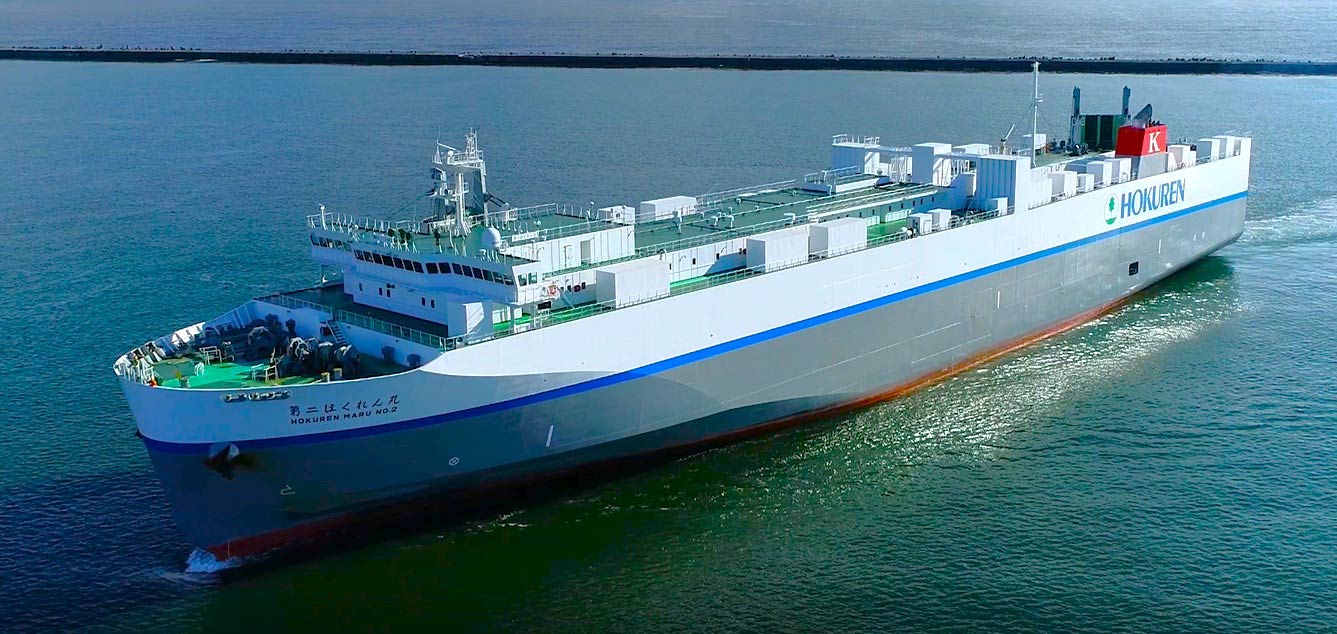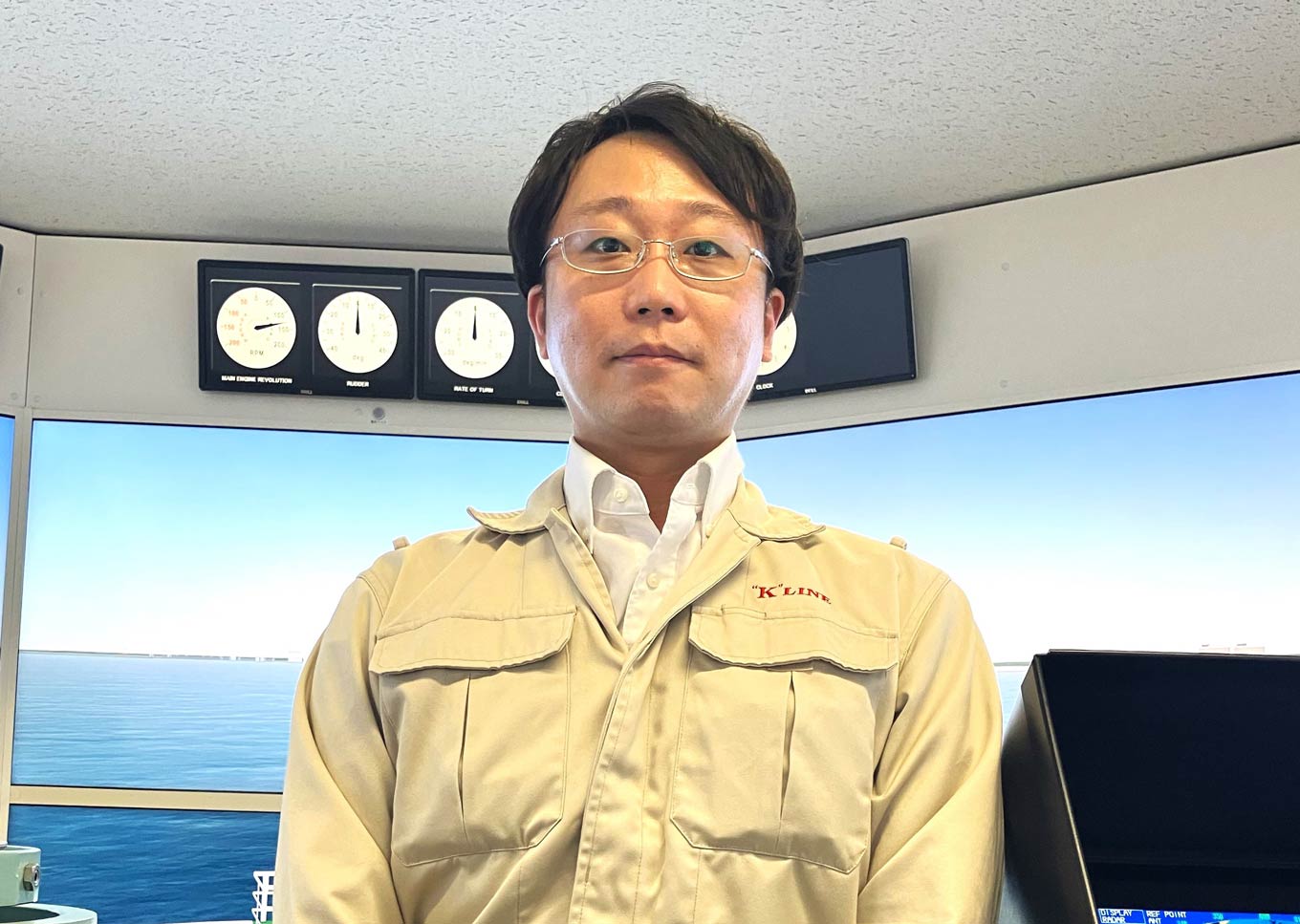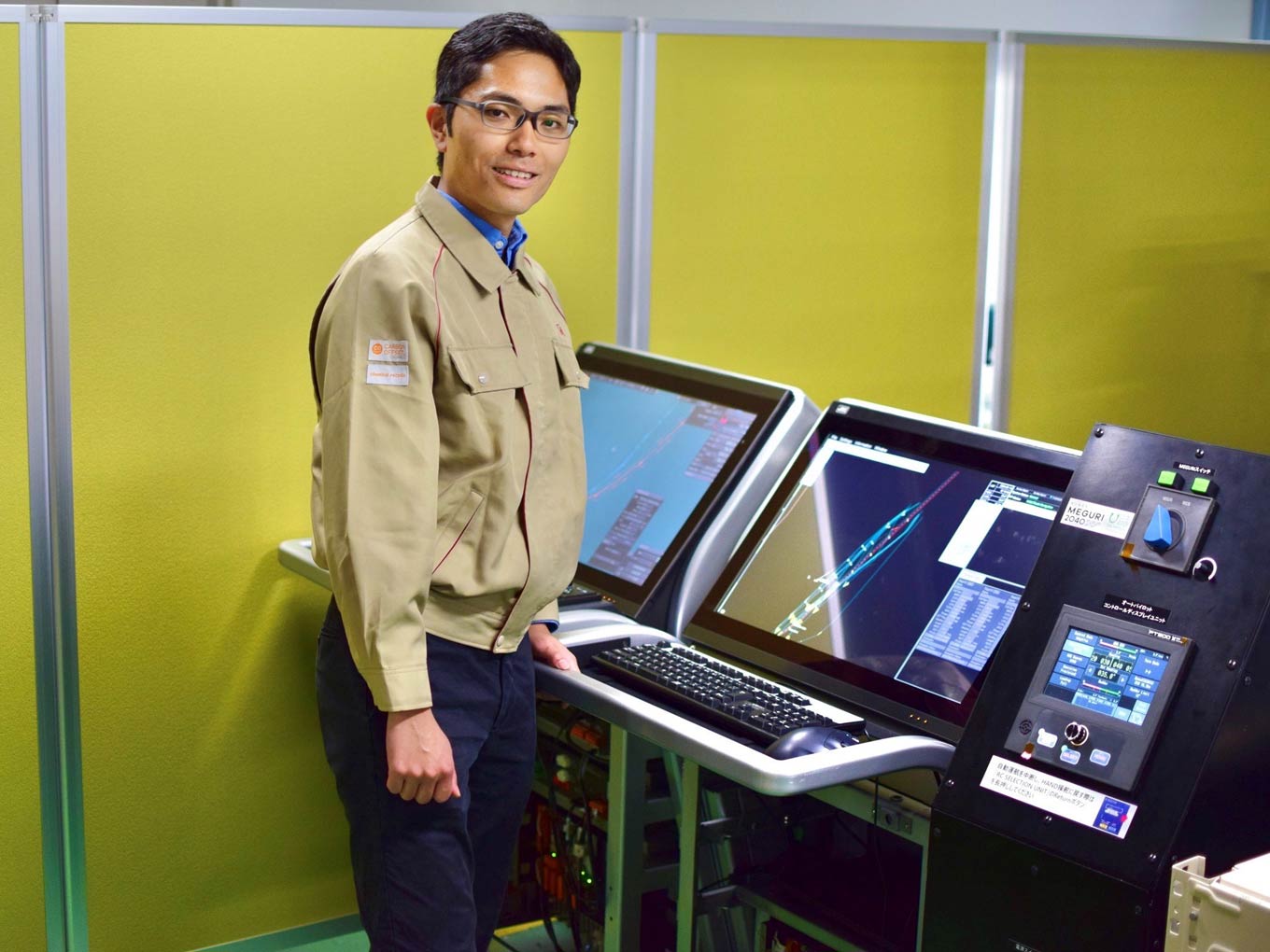
‘Hokuren Maru No. 2 ’ (RO-RO Vessel Working Group)Aiming to create unmanned and autonomous navigation technologies that lead to the future
Project overview and development status
Consortium members (as of April 2024)
Others
Project overview
Three companies – Kawasaki Kisen Kaisha, Japan Radio, and YDK Technologies – are retrofitting the existing Ro-Ro container ship Hokuren Maru No. 2 (operated by Kawasaki Kinkai Kisen Kaisha*) with unmanned and autonomous navigation functions.
This initiative is using its research and development expertise in safe navigation and various navigation instruments, the working group’s strength, to have systems carry out navigation operations that to date have been performed by humans (recognition, information management, analysis, planning, execution). Using the latest artificial intelligence and other technologies in crisis decisions while the ship is operating, the group is developing an autonomous navigation system that is close to the navigation operations performed by humans. The working group’s activities going forward will help to eliminate the labor shortage facing Japan’s coastal shipping industry and reduce workloads, prevent accidents at sea, and resolve social issues including the maintenance of remote island shipping routes. This is being jointly promoted through MEGURI2040 by The Nippon Foundation and the member companies of the Designing the Future of Full Autonomous Ship (DFFAS) Consortium, and cooperating organizations in Japan.
- A subsidiary of Kawasaki Kisen Kaisha
Development status (as of April 2024)
The main concept of the automated navigation system being developed by the working group is to retrofit the latest technologies including artificial intelligence to carry out navigation operations that to date have been performed by humans (recognition, information management, analysis, planning, execution). To achieve automated generation of routes to avoid collisions and realize automated navigation, the consortium first made the basic design for each subsystem, analyzed risks across subsystems, and used a navigation simulator to confirm the system’s overall operation.
The system was then installed in the large (11,413 gross ton) Ro-Ro Hokuren Maru No. 2 in October 2023, and successful demonstration tests of the overall system were conducted over three roughly 1,600–kilometer voyages between Hitachi, Ibaraki Prefecture, and Kushiro, Hokkaido.
The results of the demonstration tests are currently being analyzed and development to enhance the system’s functions further is ongoing.
Development highlights
The automated navigation system that the working group initially developed consists of the following five subsystems to visualize objects that cannot be captured by the vessel’s automatic identification system (AIS) and onboard radar and other potential risks along the route, and to propose routes to avoid a collision and automatically navigate that route with the navigator’s permission, and to support a series of actions carried out by the ship’s navigator.
- Status management subsystem: Receives status information and alerts from the subsystems and analyzes the status of the overall system.
- Route creation subsystem: Constantly monitors collision risks based on the vessel’s and other vessels’ location, course, and speed data. When a potential collision is detected, it creates and proposes two types of evasive routes.
- Sensor fusion subsystem: Integrates landmark information from surrounding transit time information, automatic information system information, and the AI image recognition subsystem to provide highly accurate landmark information.
- AI image recognition subsystem: Overlays images taken from optical cameras and infrared cameras to supplement surrounding landmark information regardless of whether it is daytime or nighttime.
- Lookout support display subsystem: Displays a 3D image of the vessel’s course, evasive routes proposed by the evasive route generation subsystem, and surrounding landmark information on a screen, making it possible to confirm the vessel’s surroundings.
The automated navigation system, which comprises these five subsystems, was installed on the Hokuren Maru No. 2 demonstration test vessel, and demonstration testing was carried out as described above.
Looking ahead
Going forward, the working group will use feedback from the team’s strength of expertise in research and development of safe navigation and various navigation instruments based on the various data obtained from demonstration testing to make further refinements to the automated navigation system.
Specifically, in preparation for the demonstration testing aiming for fully autonomous navigation being planned for 2025, in addition to improvements being made to onboard systems based on the results of research and development to date, the consortium is developing an automated speed control system with the aim of being able to control the vessel at low speeds during berthing and un-berthing and achieve a collision avoidance function that incorporates changes in the vessel’s speed. This automated navigation system is being designed to be able to be installed in various types of vessels and used in a variety of ways.
An onshore Fleet Operation Center (FOC) is also being built for constant monitoring of the vessel and navigational support, and an onshore system to link to onboard data and a ship-to-shore telecommunications system are also being developed and tested as ship-to-shore technologies for the realization of fully autonomous navigation.
Participants’ comments
Masato Imai (Marine Technical Innovation Team, Advanced Technology Group, Kawasaki Kisen Kaisha)
As a maritime nation, it goes without saying that marine transport – both coastal and ocean-going – is highly important for Japan. The coastal shipping industry has recently been working urgently to address the issue of crew shortages, and I believe this project will play an extremely important role in supporting the future of maritime transport in Japan. Kawasaki Kisen is working to develop an automated navigation system using the expertise in safe shipping that we have cultivated over many years. Thanks to the cooperation of everyone involved, I believe we are gradually coming closer to a future with automated navigation. All of us in the development group are aiming to achieve a sustainable society through automated navigation systems.

Mikihisa Ishii (Japan Radio)
I’m in charge of developing software that will automatically generate routes so that a ship will avoid collisions with other ships. Development is proceeding by bringing together each company’s unique features and strengths, which leads to insights that we would not have in our own internal product development. I also feel a sense of satisfaction from the fact that we are pursuing this challenge together across companies to address the major social issue of labor shortages. I hope that by developing the world’s best and fully autonomous navigation system, we will foster innovation in the maritime industry.




